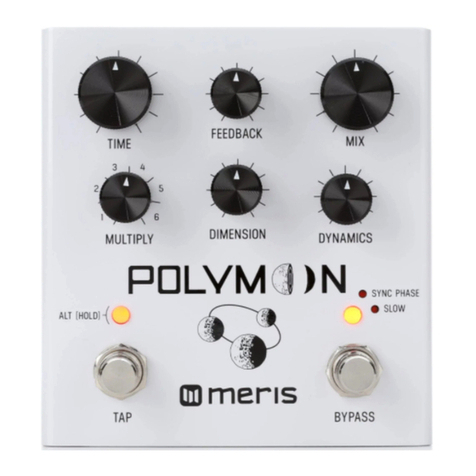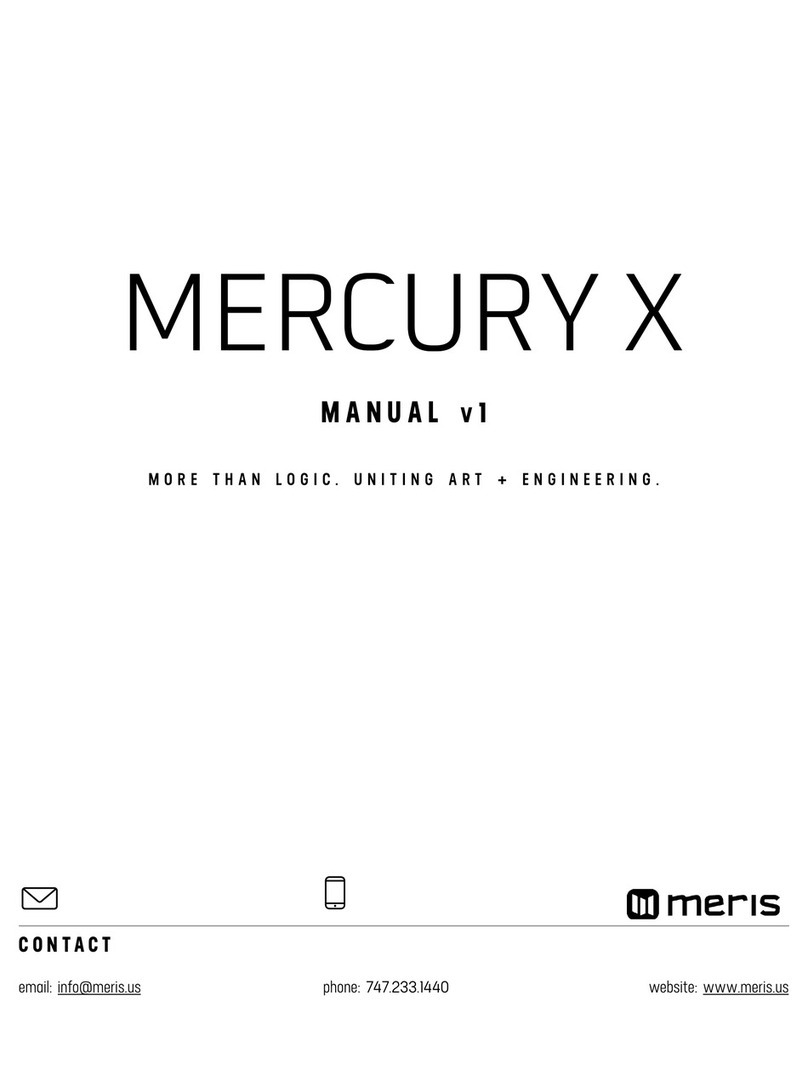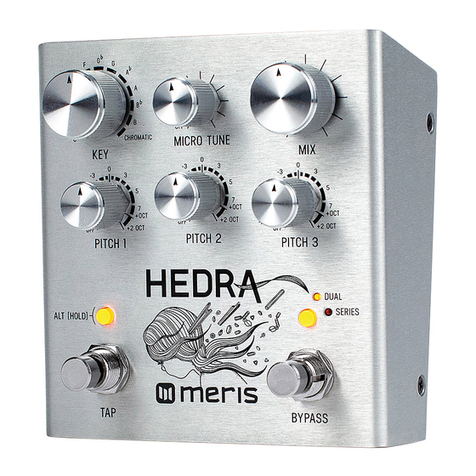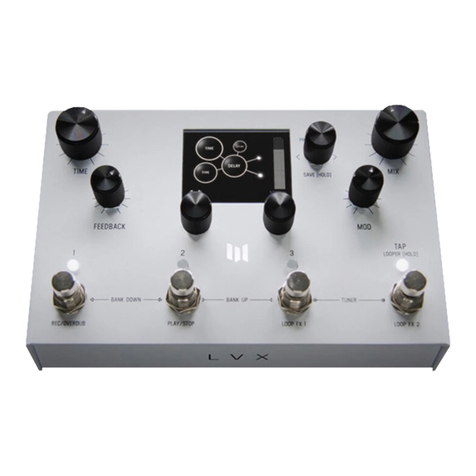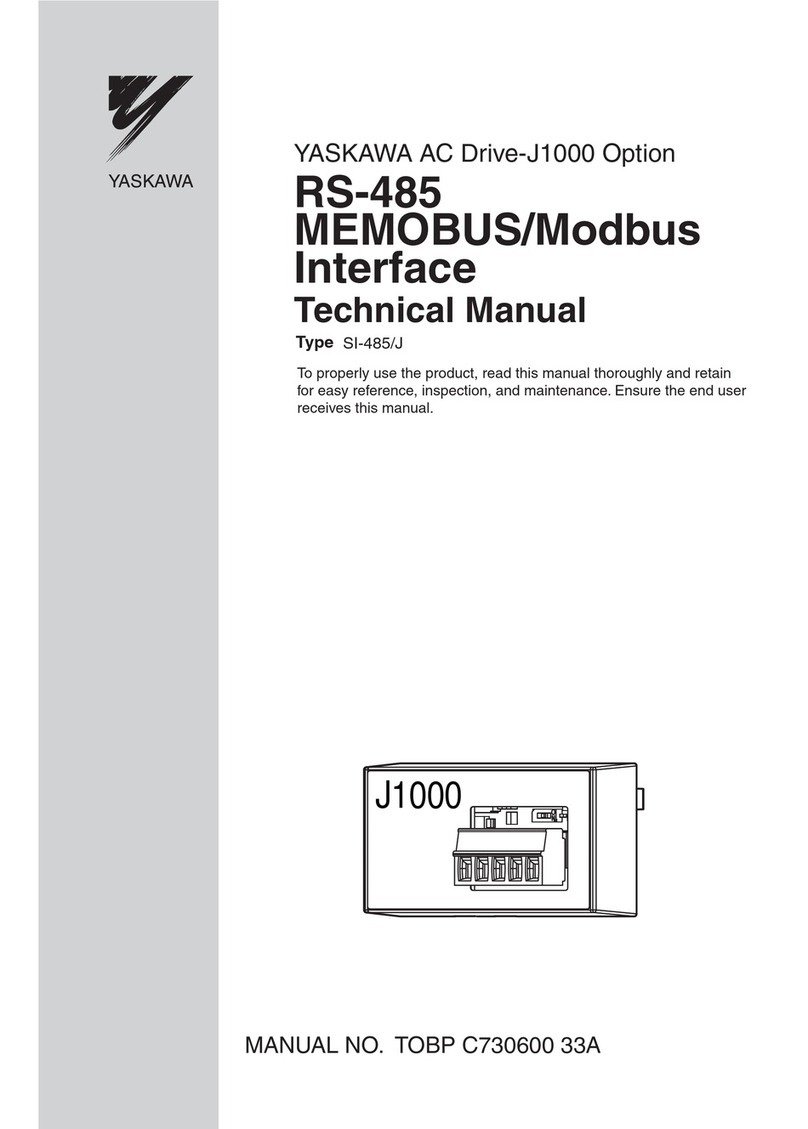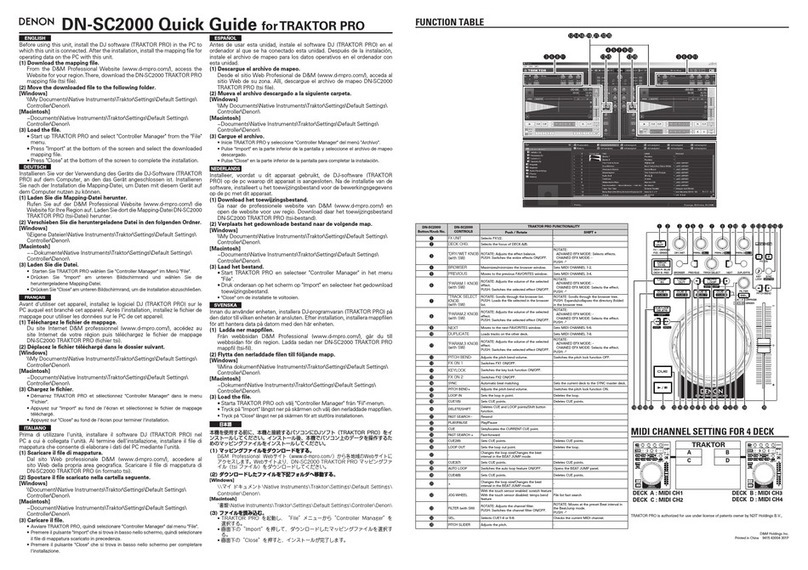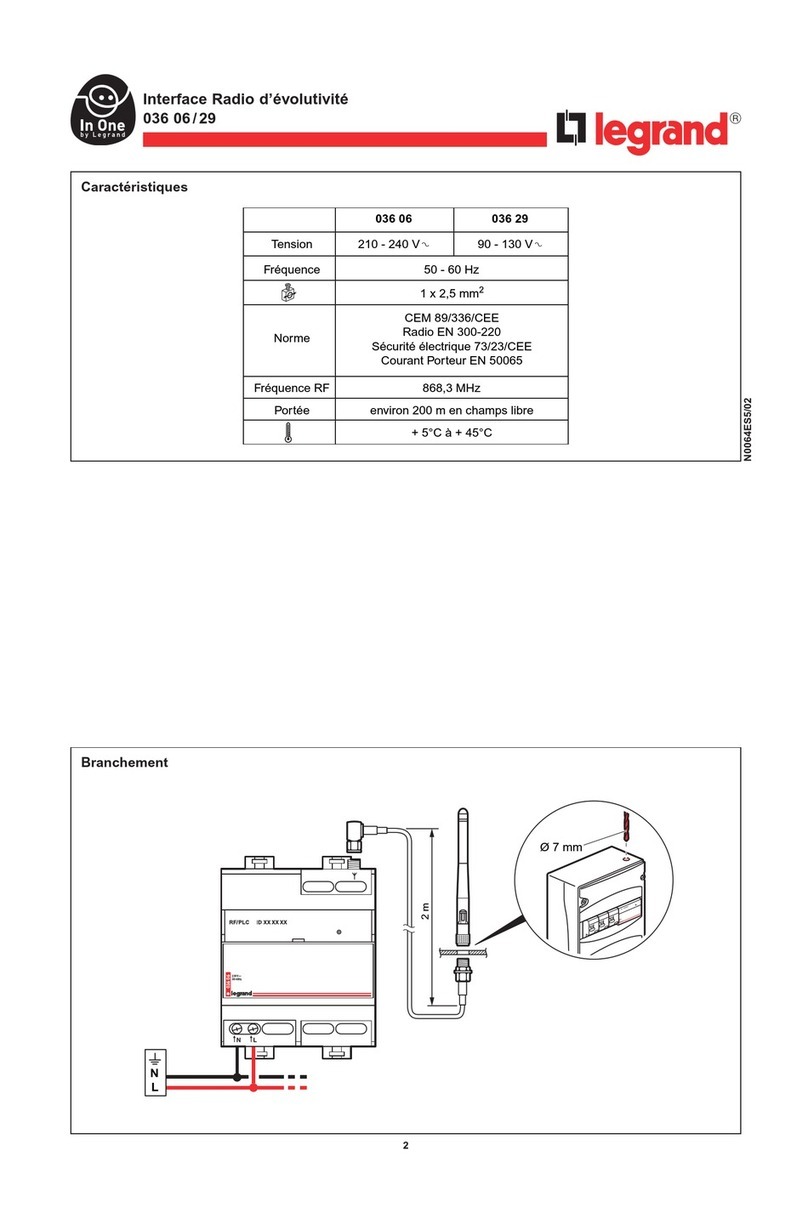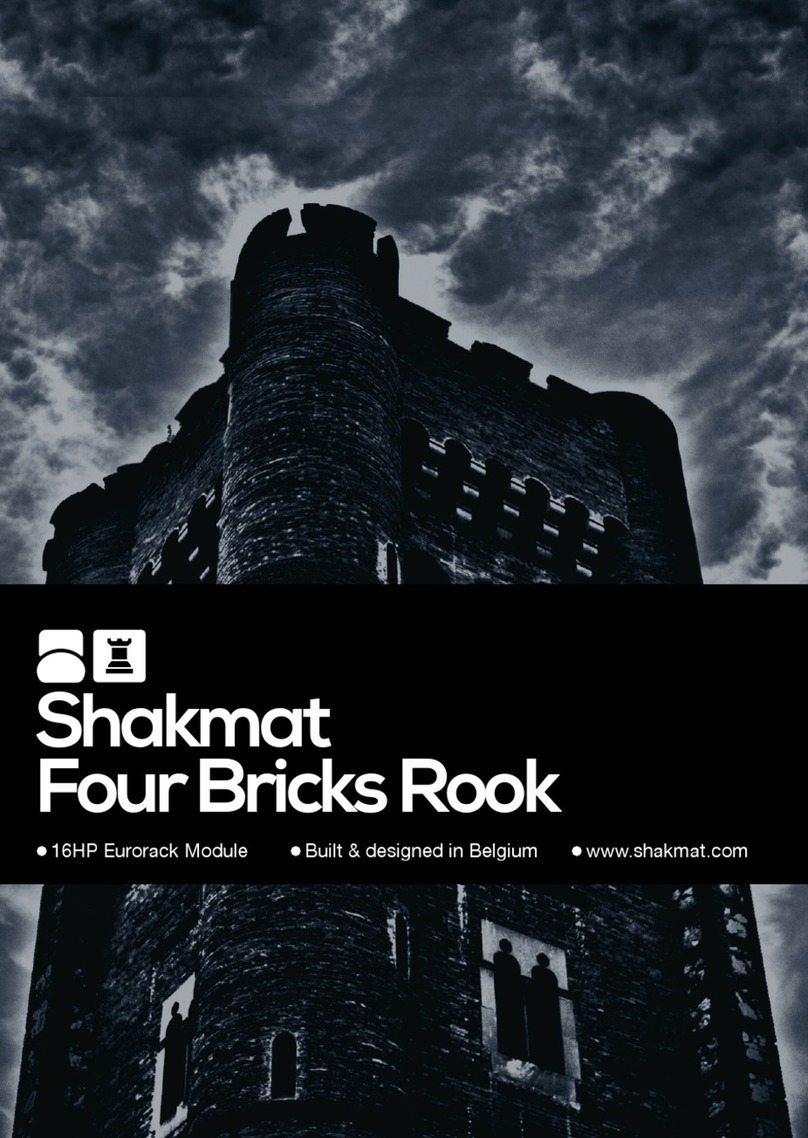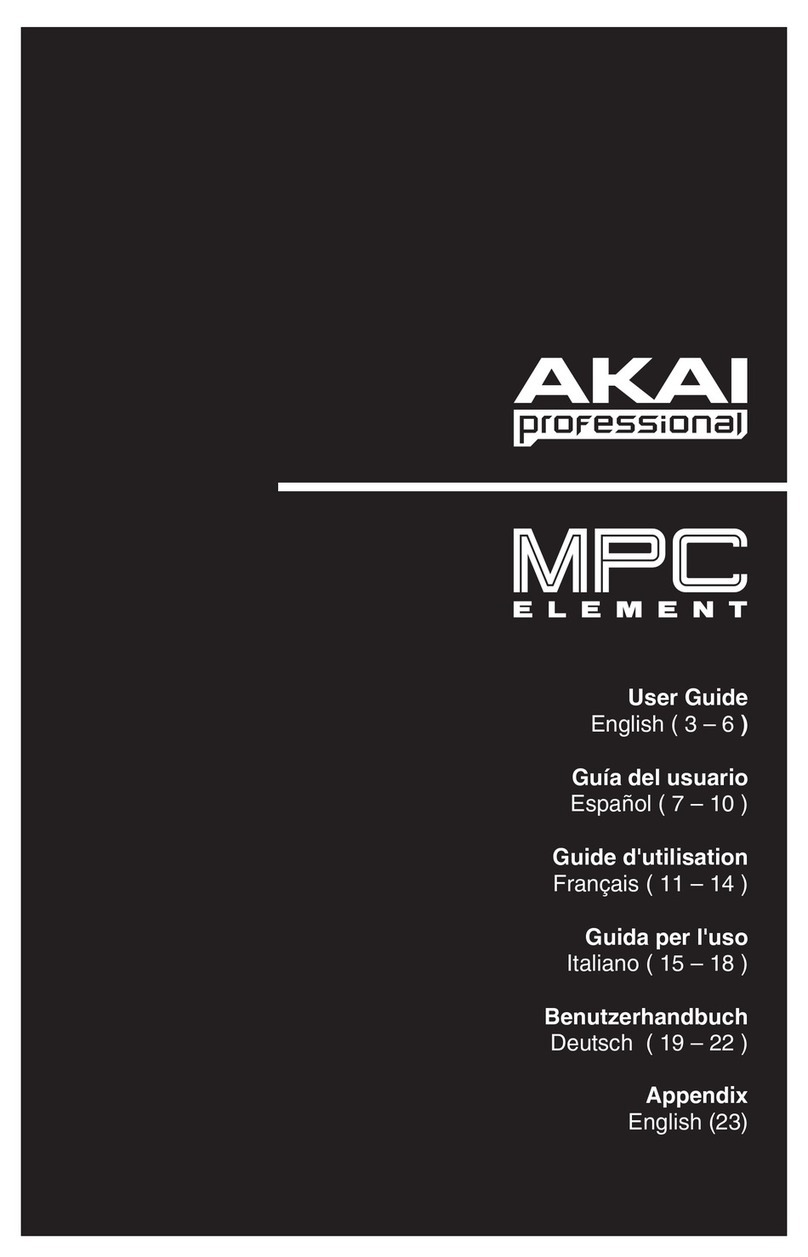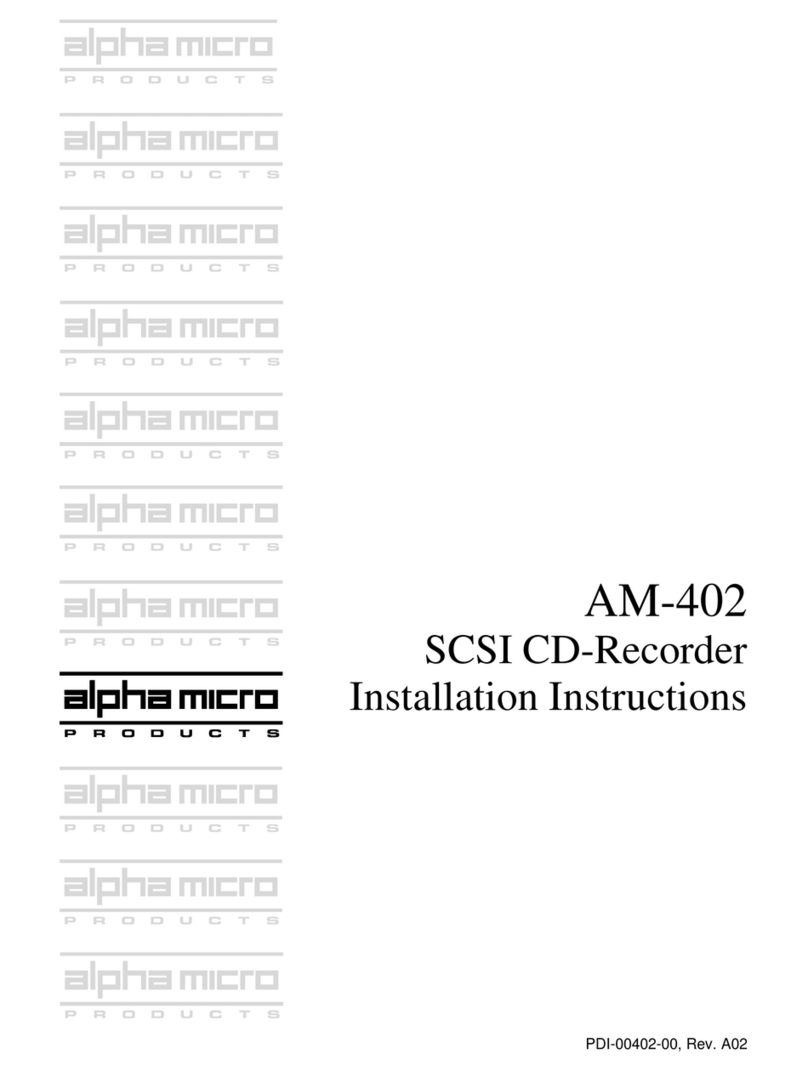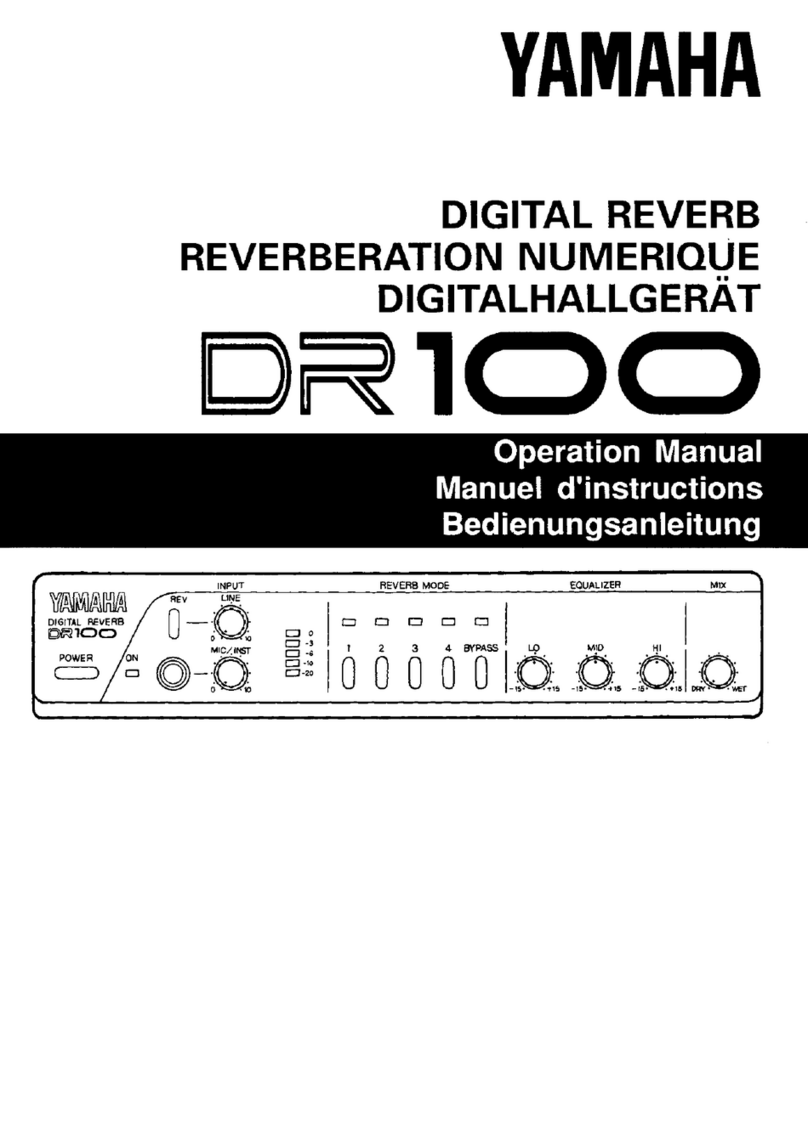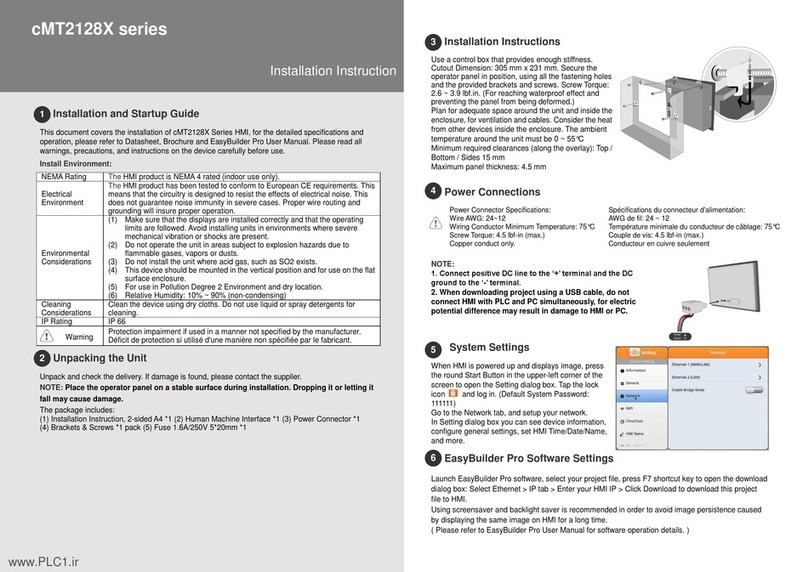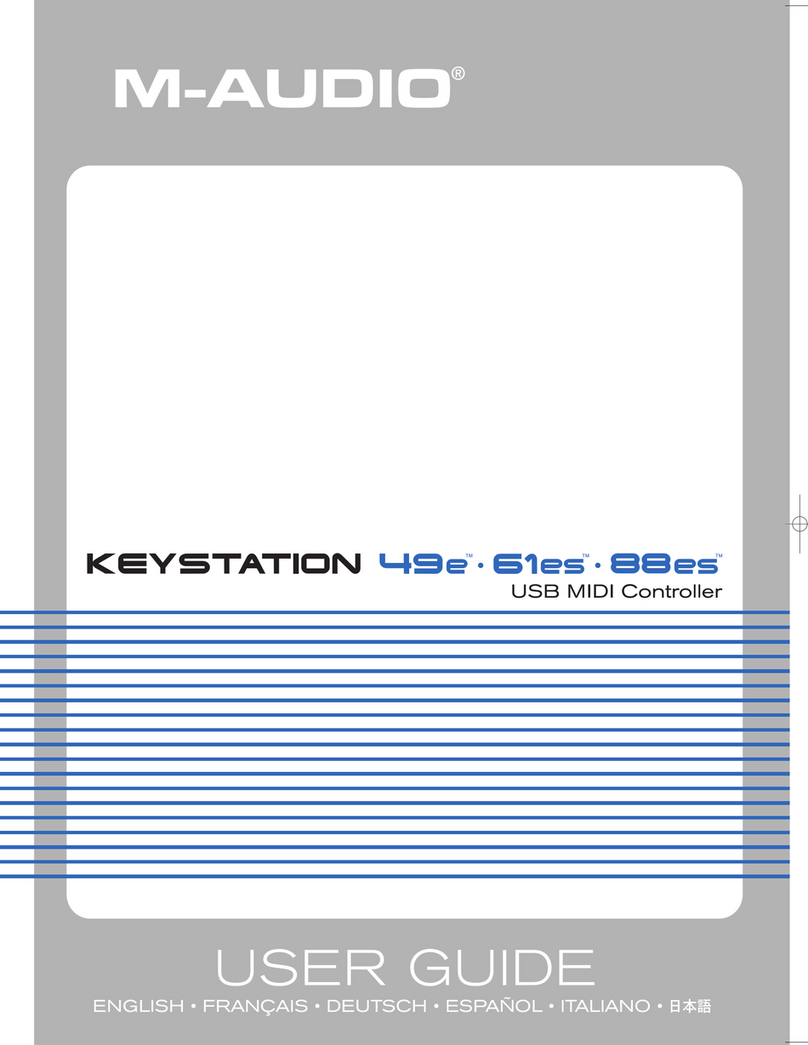Meris AUTOMATONE CXM 1978 User manual

INSTRUCTIONS
1978 was a big moment for reverb. It was the dawn of sprawl, the first time reverbs were capable of
massive trails and infinite decay. The CXM1978 reaches back to that moment, allowing you to explore
the charm of those late 70’s imperfections, or hifi and lofi reimaginings.
The reverb you’ll find here is highly interactive and physical, built from a moving, evolving network of
digital reflections. Each space has its own behaviour and response, just like true reverb. So, let’s learn
how to use it.
FADERS
The flying faders react to preset changes, expression, CV, and
MIDI, offering visual feedback of exactly what’s going on.
BASS, MIDS, CROSS, TREBLE
These four faders combine to set the reverb time. The CXM1978
has a unique approach to reverb shaping that focuses on EQ
rather than a simple decay control. By adjusting the EQ, you are
actually setting the absorption of the walls that make up the
reverb tank. The tone and behaviour are interwoven, just like
physical reverb.
BASS
Sets the decay time below the crossover frequency
MIDS
Sets the decay time above the crossover frequency
CROSS
Sets the crossover point of the BASS and MIDS. You can think
of this like a frequency splitter – everything above the crossover
point goes to the MIDS control, everything below goes to the
BASS control. A good way to wrap your head around this is by
turning up the MIDS slider completely, then adjusting CROSS.
With CROSS all the way up, you will have a thin reverb with a
fairly short decay. This is because most frequencies are being
routed to the BASS control. As you bring CROSS down, both the
decay time and EQ expand. The benefit of this approach is you
can give a unique decay time to both the BASS and MIDS, and
set exactly how to divide the two. This can be used to create
a pad of bass reverb that sits neatly beneath your playing, for
example. The range is from 0 Hz to 1700 Hz.
TREBLE
Darkens the reflections by increasing absorption. TREBLE is
a good example of how the EQ is interconnected – even with
MIDS and BASS at max, the decay time will be quite short with
TREBLE at minimum.
MIX
Sets the analog balance between the Wet and Dry signals.
PRE-DLY
Sets the delay before the onset of the reverb. The range of the
pre-delay slider is set by the CLOCK button. Additionally, the
HIGH setting of the DIFFUSION button adds a unique smeared
feedback to the pre-delay for flanged textures at short times
and smooth organic echoes at longer times (see CLOCK for
more on this).
BASS MIDS CROSS
1700Hz
0Hz
362Hz CROSSOVER
362 - 1700Hz0 - 362Hz

FOOTSWITCH FUNCTIONS
PRESET/BANK
This button toggles between 10 saved presets (0-9 on the LED Display) for each bank. Holding down the PRESET/BANK button
selects between the three banks indicated by the Bank LED, which is unlit for the first bank of presets, RED for the second bank,
GREEN for the third bank. All 30 presets are accessible using only this switch, but MIDI control can offer more flexibility.
BYPASS/SAVE
Engaging Bypass toggles between whether the pedal is effecting incoming audio or not. Holding down the button will save
all audio and expression settings to the current preset. If you want to move and save the current settings to another preset
number, hold down the JUMP arcade and press the PRESET stomp to find the number you want and then hold the BYPASS
stomp to save it in that location. Movement between banks is allowable by holding down PRESET.
ARCADE BUTTONS
JUMP
The JUMP feature lets you instantly skip to preset 0 or 5,
like a favorite selector. If JUMP is active when you hit the
PRESET footswitch, it will jump to the selected destination.
For example, if you are on Preset 7 and the JUMP button is
blue, hitting the PRESET stomp will skip to Preset 0. If you are
on Preset 7 and the JUMP button is red, hitting the PRESET
footswitch will skip to Preset 5. Each preset can be saved with
its own JUMP setting. JUMP makes it possible to toggle back
and forth between presets 0 and 5, for example, or create
custom groups within a bank for quick scrolling through
your favorites.
CLOCK
Sets the fidelity, and length of the PRE-DLY control.
HIFI: A clean, modern take on the reverbs of yesteryear, with
a low noise floor. 48kHz sample rate, 32 bit input resolution,
42ms max pre-delay.
STANDARD: 1978’s finest. You can think of STANDARD mode
as retro hifi, pleasantly flawed and limited by the technology
of the time. 24 kHz sample rate, 16 bit input resolution, 168ms
max pre-delay.
LOFI: A fluid setting that can introduce a variety of textures,
from subtle digital sparkle to overt filtering and degradation.
The PRE-DLY slider has a dual purpose in LOFI – it works like a
bucket brigade delay, where the ‘time’ knob adjusts the clock
rate. The higher the pre-delay, the more the sound quality
falls apart. 48kHz-2.4kHz sample rate (variable), 16 bit input
resolution, 1.7 second max pre-delay.
TANK MOD
Sets the amount of modulation present in the CXM’s
reverb tank
LOW: adds a subtle, organic liveliness to the reflections
MED: slow speed and moderate depth for chorus-
like movement
HIGH: fast speed and low depth for rotating speaker
inspired overtones
DIFFUSION
A deceptively multi-faceted control that sets the amount of
smearing for the initial attack of the sound, but also engages
some unique hidden behaviours.
LOW: No smearing on the attack (also called the transient),
for a very clear and uncolored sound. Bonus for Hall - the
LOW setting enables a sparse mode that surrounds the attack
with a cloud of soft delay taps, specially designed for the
Hall algorithm.
MED: A softened attack, best heard on percussive sounds with
a short decay. By spreading out the energy of the attack, the
reverb onset is slowed and the reflections inside the reverb
tank are more gentle overall.
HIGH: Introduces regeneration to the pre-delay, along with
an extremely softened attack. The effect of this regeneration
is dependent on the pre-delay time – lower settings produce
comb filtering (flange) or very dense reflections, while higher
settings (best with the LOFI CLOCK) yield distinct echoes like a
delay. The feedback path includes the diffusion, so that every
repeat of the pre-delay is more smeared. The regeneration
amount is fixed.
TYPE
ROOM: A lively and direct character, great for transforming
static sounds into something with a natural sense of place.
ROOM has the ability to provide both ambience and a feeling
of groundedness and familiarity. Try pairing it with virtual
amps or instruments to bring them to life.
PLATE: Fast and dense, with a flexible character. Plate tends
to be agreeable and easy to blend in – alongside the natural
acoustic reverb captured in a recording, for example. A good
match for beefing up percussion and vocals.
HALL: A large space with a medium build up of reflections.
Well-suited to ambient walls of sound, the extended
reflections are a great base for sculpting with the BASS/MIDS/
CROSS controls. Deep rumbling bass caverns and ethereal
upper-mid halos are easy to create. Don’t forget to explore
the additional sparse mode with DIFFUSION set to LOW.
BALANCED I/O
CXM 1978 has the ability to have either unbalanced or ultra-low-noise balanced inputs and outputs. Unbalanced I/O is the
default and in this mode, the bypass LED turns red when activated. Balanced I/O can be engaged by holding down the bypass
stomp while powering the pedal, and in this case, the bypass LED turns green when activated. Your preferred mode will be
remembered by the pedal when powered down, and if you’d like to switch, you need to hold down the bypass stomp while
powering the pedal again.

EXPRESSION
While on the T and H pages, faders not selected
on the E page will reference their Preset settings,
do not need to be moved, and will not effect audio.
This allows you to safely audition the core preset
sound while fine tuning the T and H ranges of faders
selected for expression control.
Finally this expression mode is referred to as Local,
in that it only effects the preset which you entered the
Setup Menus from. So you will have 30 presets, and 30
expression settings one for each preset. One last thing,
you can decide whether or not you want bypass trails
on or off in this mode by pressing the JUMP button.
Blue LED means trails are on, and is the default setting.
Here is a sample setup instruction setup:
1
2
3
4
5
6
7
Enter Expression Setup Menus
Slide Faders up (on) or down (off)
to assign to Expression Control
Enter Toe Page
Slide Faders selected on
Expression to the position
desired when at full TOE
Enter Heel Page
Slide Faders selected on
Expression to the position
desired when at full HEEL
Exit Expression Setup Menus
PRESET BYPASS
PRESET
TAP
TAP
BYPASS
TAP
PRESET BYPASS
TAP
EXPRESSION MENUS
There are three pages in this setup. Page “E” will
assign which faders expression will control. Page “t”
will set the position of each fader when expression is
all the way at the max toe on your treadle (or 5v on
CV). Page “H” will define the position of each fader
when the treadle is at full heel position (or 0v on CV).
When adjusting you can skip to any page and modify
only that page. No need to do each page each time.
The settings created or changed here will only be
saved to the preset when you exit and HOLD BYPASS
(or send a Midi Save CC). Worth noting: we are only
setting the faders range, not your expression pedals
range. There is no need to move the expression pedal
during any of the setup.
To connect an expression pedal, insert a TRS cable from the expression pedal to the EXP jack on the back of the pedal.
By default, the expression pedal controls no parameters and will need to be assigned to the sliders. This can also be used
for 0-5V Control Voltage (CV). When using CV instead of expression, you should use a TRS cable with the ring floating.
These are available at chaseblissaudio.com.
Some of these concepts are much easier to
explain and demonstrate on video, and we have
many tutorials available on our youtube channel at
youtube.com/ChaseBlissAudio
We also love to hear from customers and answer
questions so feel free to write us anytime at
chaseblissaudio.com/contact
Here is a sample setup instruction setup:
Here once you tap PRESET and BYPASS while on these
pages you will now exit and use the Global expression
setting for all presets (even when you scroll presets). If
you want to get back to using local expression settings,
simply tap BYPASS and PRESET, HOLD one of the
foot switches until you see the LED show the E, T or H
without the asterisk and you have toggled back to the
local expression mode for each preset.
1
2
3
4
5
6
7
8
Enter Expression Setup Menus
Switch to Global Mode
Slide Faders selected on
Expression to the position
desired when at full TOE
Enter Toe Page
Slide Faders selected on
Expression to the position
desired when at full HEEL
PRESET BYPASS
PRESET
TAP
TAP
BYPASS
TAP
PRESET BYPASS
TAP
Exit Global Expression
Setup Menus
Slide Faders up (on) or down (off)
to assign to Expression Control
Enter Heel Page
PRESET
HOLD
GLOBAL EXPRESSION
When in the Expression Setup Menus, you can switch
to the GLOBAL Expression mode. Think of this as one
extra expression favorite setting that can be accessed
from all presets. You can access this Global Expression
setting from any preset, change it from any presets
expression page, and it will instantly save to the global
for all presets. This effectively gives you two expression
options for each preset. One unique to each preset, and
one common shared by all.

PRESET NAME
HOVERBOARD
Low, bass-focused reverb pad
B M C T M PD
PRESET NAME
SCATTERED THOUGHTS
Wispy multi-tap clusters
B M C T MPD
PRESET NAME
NATURAL ACOUSTICS
Pure, intimate room sound
B M C T M PD
PRESET NAME
WANDERING WIND
Feed it a note and watch it move
B M C T MPD

PRESET NAME
ROTATING CHIME
Regenerating lofi artifacts with swirling modulation
B M C T M PD
PRESET NAME
DISTANT ECHOES
Dissolving delay/reverb combo
B M C T MPD
PRESET NAME
WORLD’S BIGGEST ROOM
Impossible room with billowing trails
B M C T M PD
PRESET NAME
BENDING HALL
Classy hall with surreal modulation
B M C T MPD

This device complies with part 15 of the FCC rules. Operation is subject to the following two conditions: (1) This device
may not cause harmful interference, and (2) this device must accept any interference received, including interference
that may cause undesired operation.
PRESET NAME
BOTTOMLESS
Yeah, infinite reverb, nice
B M C T M PD
PRESET NAME
ALMOST 80’s
Vintage modulated plate
B M C T MPD
Table of contents
Other Meris Recording Equipment manuals
Popular Recording Equipment manuals by other brands
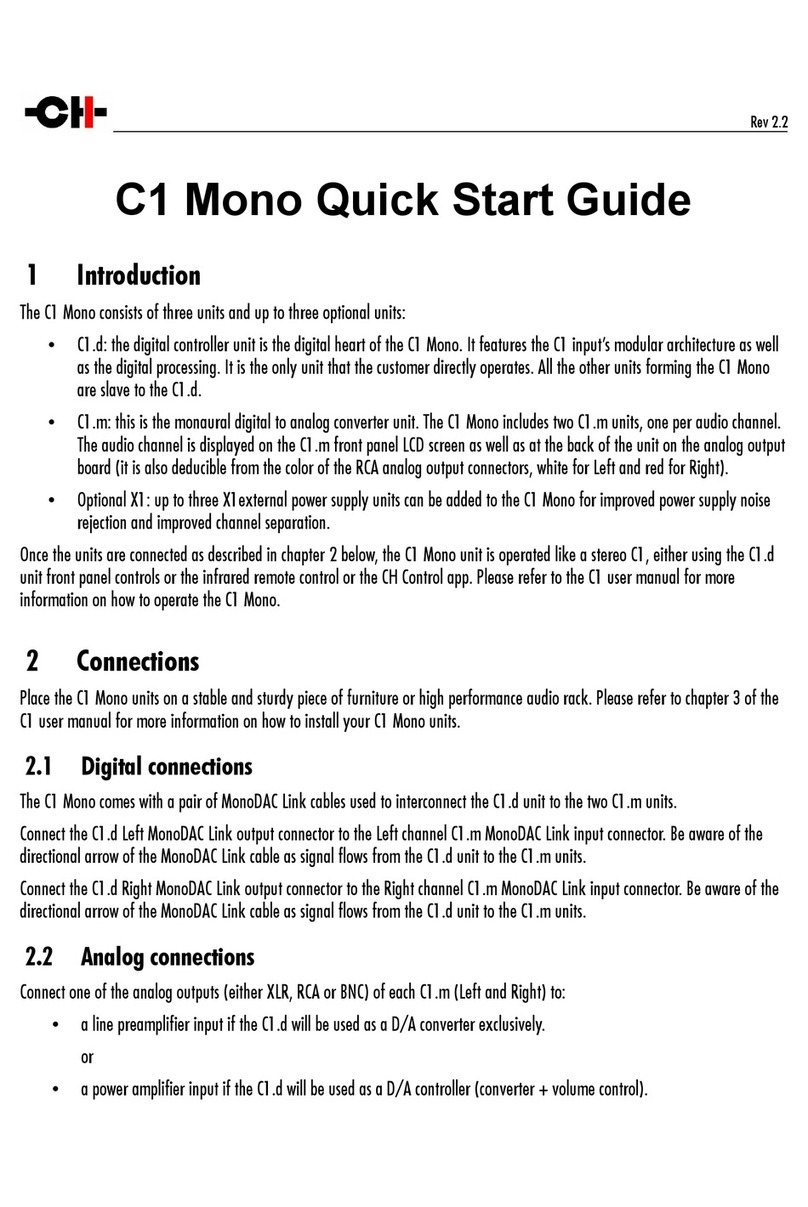
CH
CH C1 Mono quick start guide
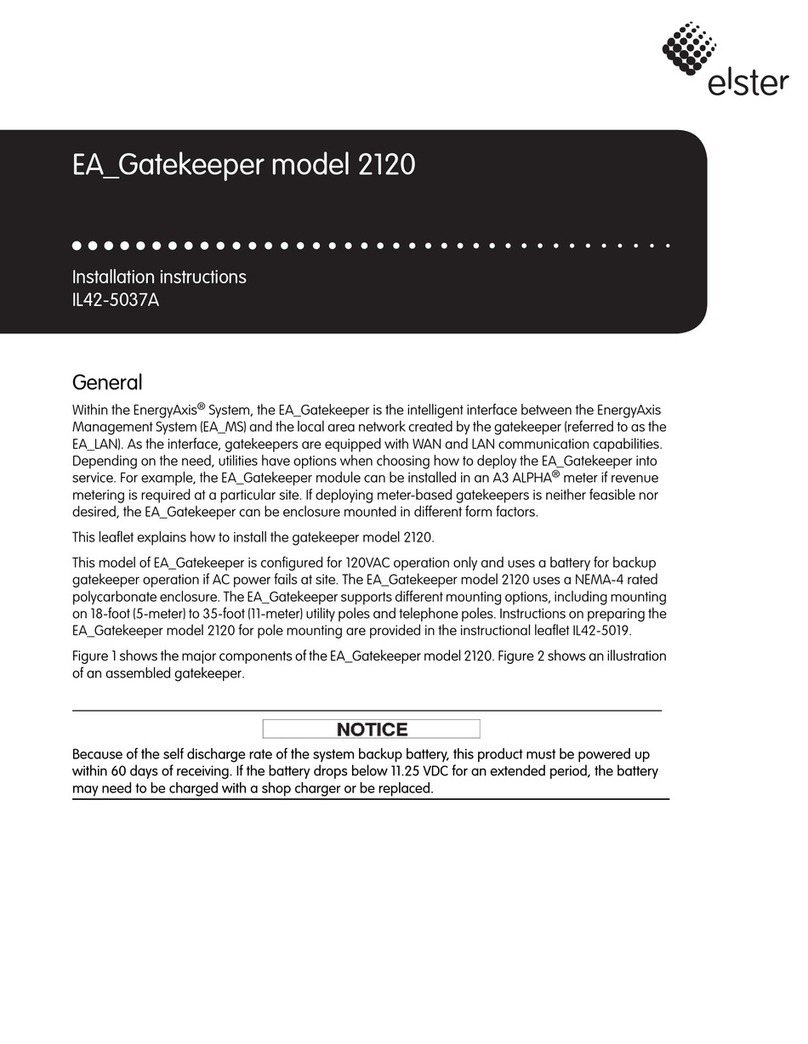
Elster
Elster EA Gatekeeper 2120 installation instructions
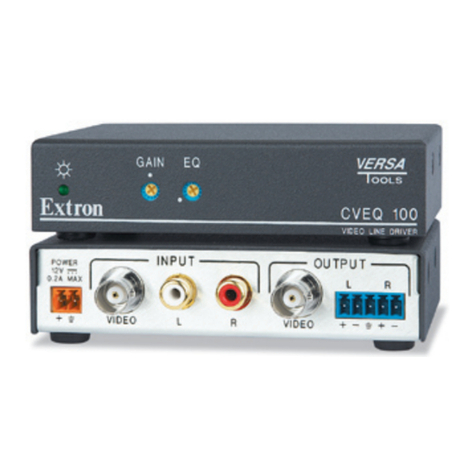
Extron electronics
Extron electronics CVEQ1 AAP Brochure & specs
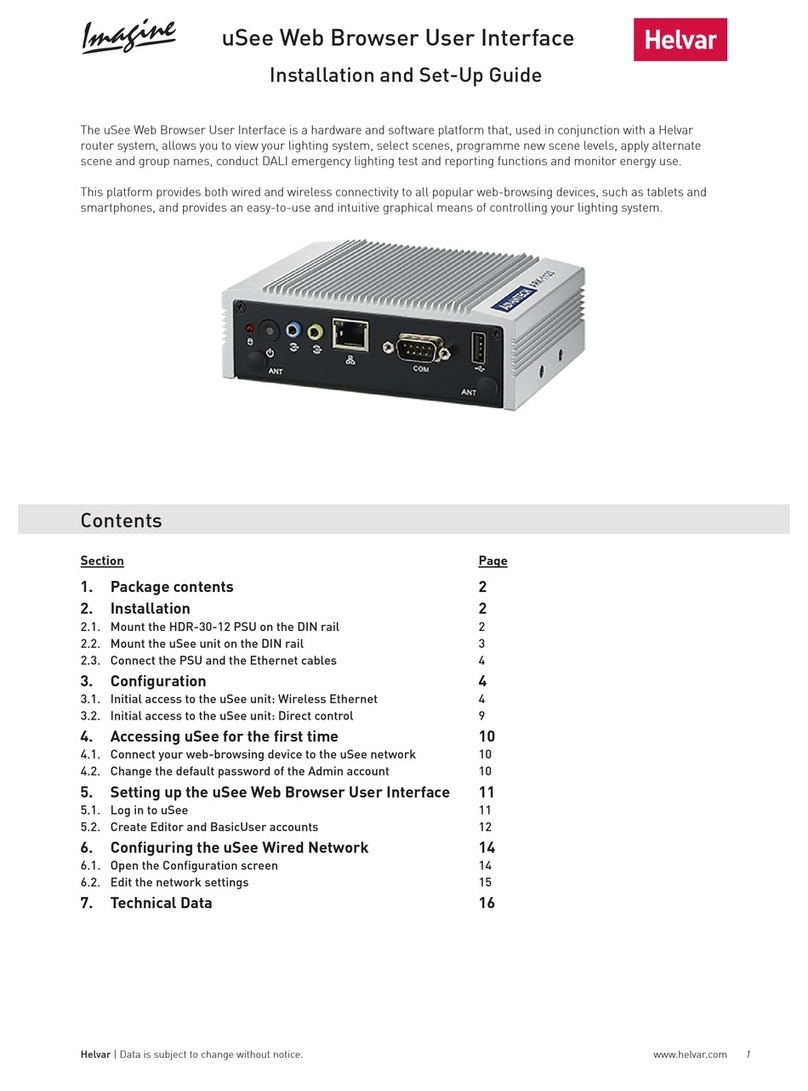
HELVAR
HELVAR uSee Installation and setup guide
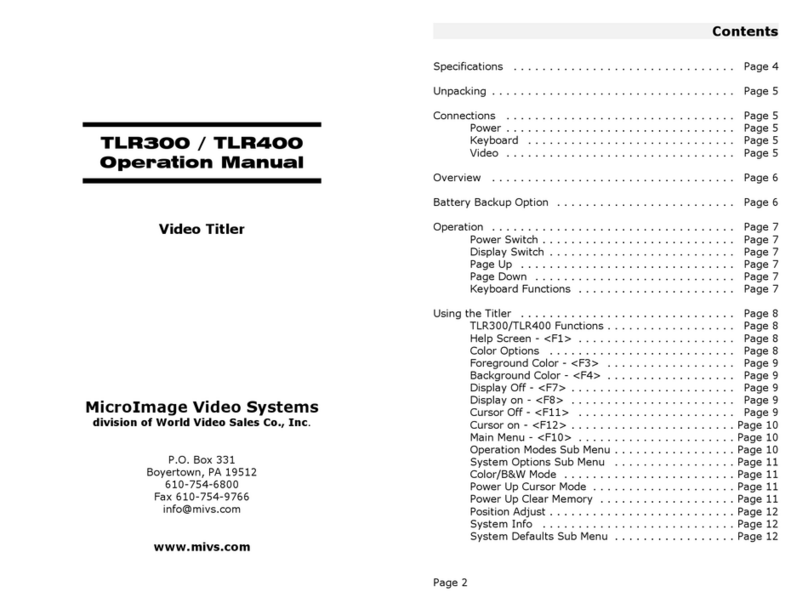
MicroImage Video Systems
MicroImage Video Systems TLR300 Operation manuals
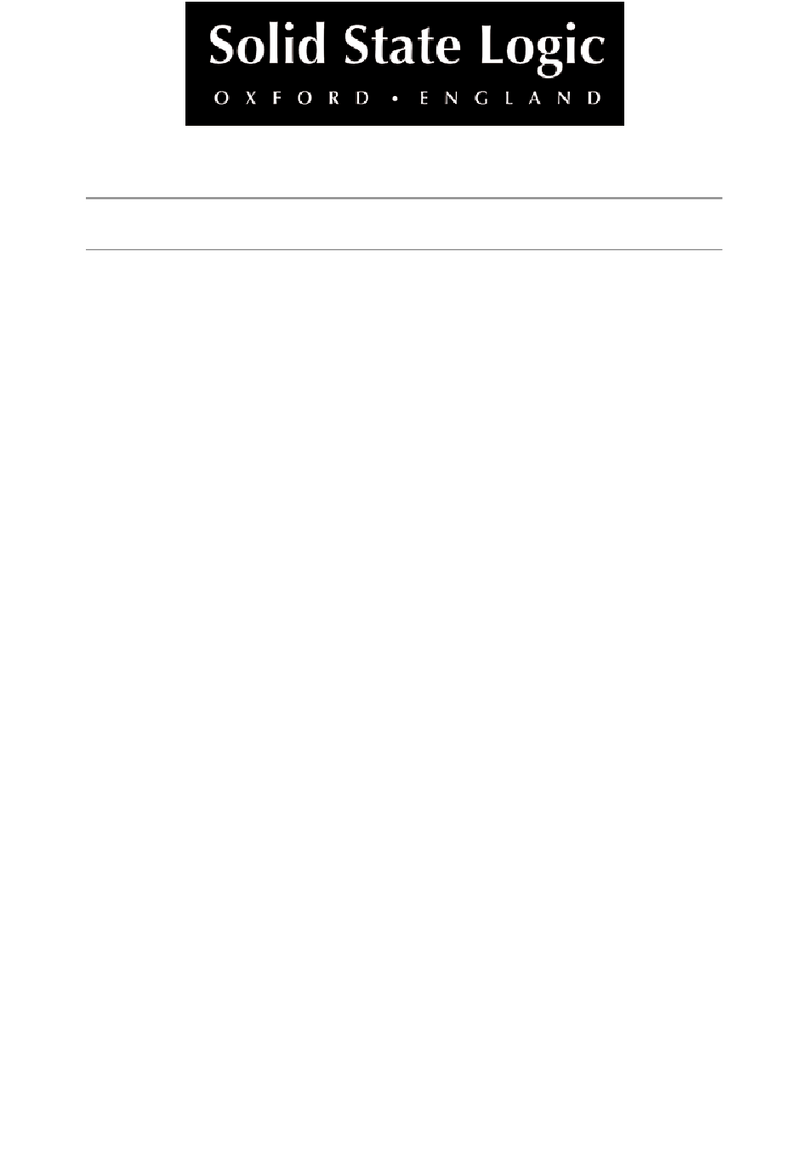
Solid State Logic
Solid State Logic SSL 4K E user guide
